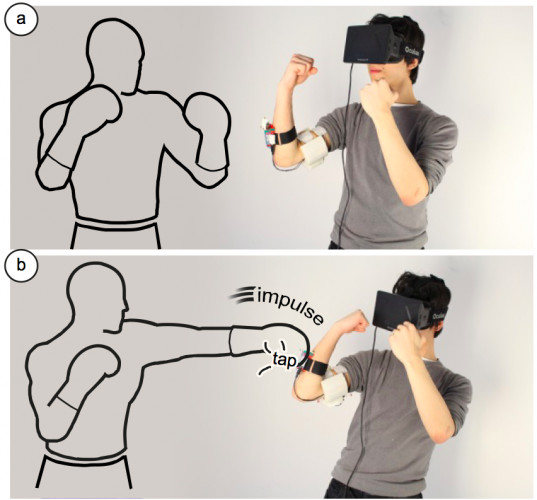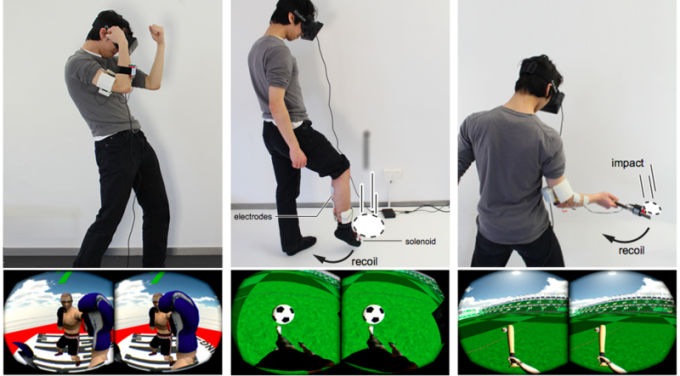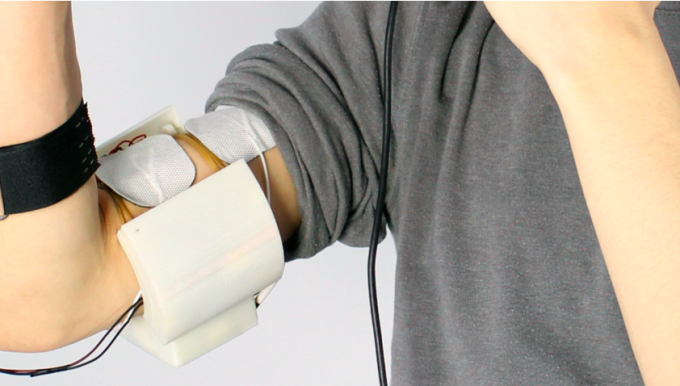The lab of Human Computer Interaction at Germany’s Hasso Plattner Institute has developed impacto, a wearable, wireless device designed “to render the haptic sensation of hitting and being hit in virtual reality.”
Led by Professor Patrick Baudisch, the lab has crafted the device to simulate impact via both a solenoid that physically hits the area of the body “hit” in virtual reality and electrical muscle stimulation (EMS) that “adds impulse to the hit by thrusting the user’s arm backwards,” according to a project summary written by Baudisch and two students in his lab, Alexandra Ion and Pedro Lopes. In the summary’s language, the impacto “decomposes the stimulus,” rendering the tactile and impulse sensations separately and allowing the compact device to simulate relatively strong hits.
The video embedded at the top of this page, posted by the lab, demonstrates the device being used in boxing, soccer and baseball simulations; the simulations themselves are running on a combination of “impacto for haptic feedback, an Oculus Rift for visuals and a Kinect for tracking.” In the boxing demo, the user feels an impact (via the solenoid) and reflexive impulse (via the EMS) on his arm when he blocks his virtual opponent’s attacks. The user’s attacks, meanwhile, register via a solenoid attached to his knuckles. The boxing demo also includes a kickboxing iteration, in which a third impacto registers impacts from kicks; the soccer demo depicts a similar scenario in which in impacto attached to the user’s foot simulates the physical sensations of kicking or juggling a ball.
The baseball demonstration is a bit different: it shows the user with a solenoid-attached prop (standing in for the bat) and an EMS device attached to his arm. The “bat” registers the impact of the virtual ball, while the EMS’s impulse causes his arm to flex in response to impact.
The video further sums how exactly a “hit” travels from the virtual to the physical world. When Unity3D detects an impact, it sends a signal wirelessly to the relevant impacto module. All said and done, impact detection to impacto response occurs in approximately 50ms.
As shown in the video and on the project summary page, the impacto’s solenoid component comes in a variety of sizes and shapes to accommodate feet, knuckles, arms and props. Users attach the EMS device to the muscle whose contraction accompanies a solenoid-produced impact, e.g., the bicep when boxing.
The tech represents a creative and fairly non-intrusive solution to registering impacts via a haptic wearable. With that in mind, it goes without saying that we look forward to seeing where the device, and the lab behind it, go from here.









